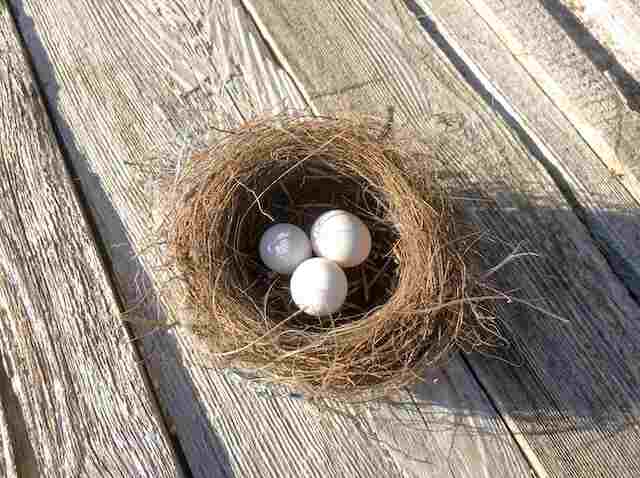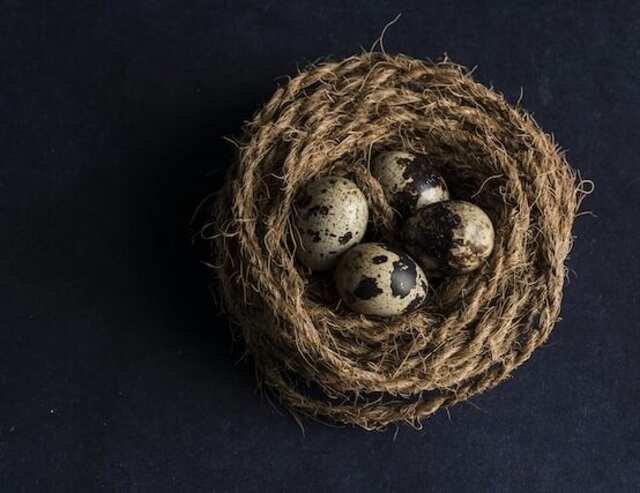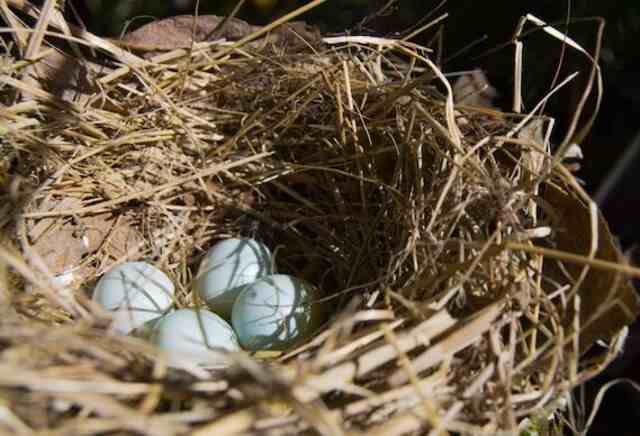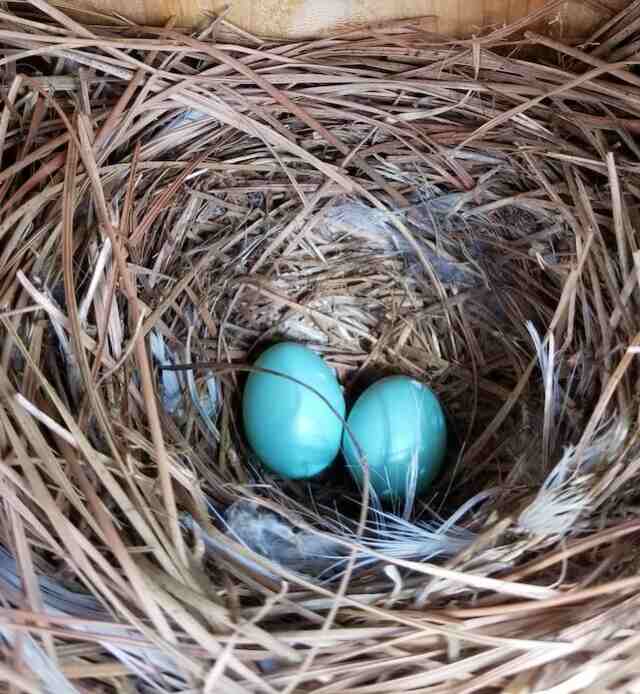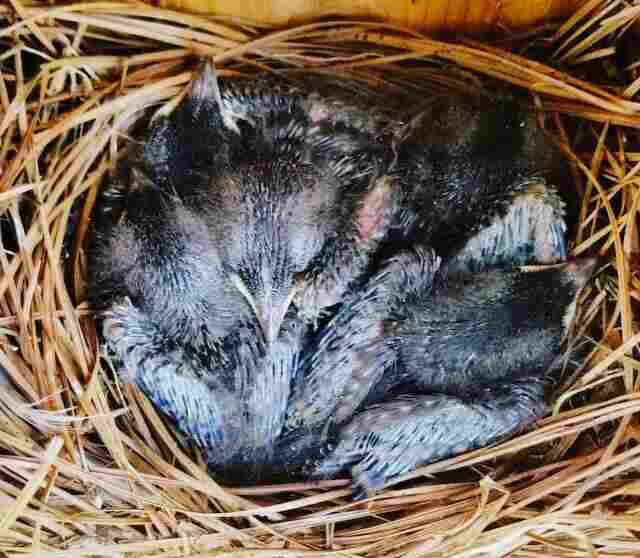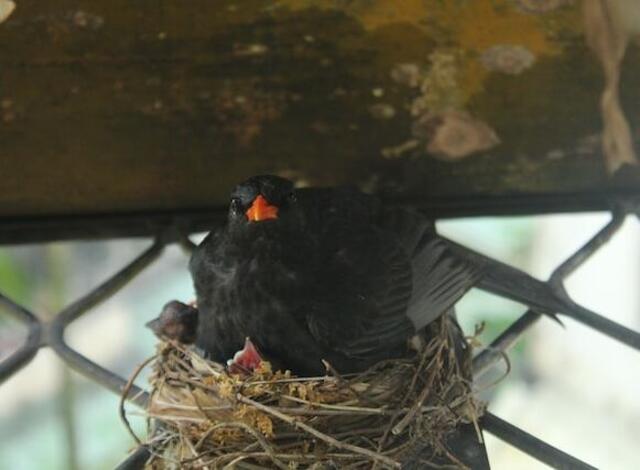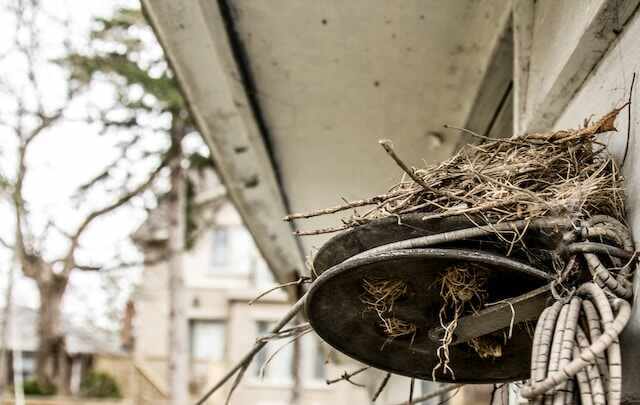Birds nesting on downspouts can be a common problem for homeowners, causing damage to the downspouts and gutters, as well as posing potential health risks associated with bird nests.
According to a recent study, over 60% of homeowners have experienced bird nesting on their downspouts at some point, highlighting the need for effective bird control measures.
Fortunately, there are many solutions available to prevent birds from nesting on downspouts, ranging from installing bird deterrents to making downspouts inaccessible to birds.
In this article, we will explore the various methods on how to keep birds from nesting on downspouts and provide tips for maintaining a bird-free property.
By implementing these best practices for bird control and addressing bird infestations promptly, homeowners can protect their property and keep their families safe.
Table of Contents
- 1 Problem Overview
- 2 Damage to Downspouts
- 3 Health Risks of Bird Nests
- 4 Deterrent Solutions
- 5 Bird Deterrents
- 6 Spikes and Wire Mesh
- 7 Bird Deterrent Ribbons
- 8 Inaccessible Downspouts
- 9 Trimming Branches
- 10 Scare Devices
- 11 Physical Barriers
- 12 Natural Repellents
- 13 Sticky Repellents
- 14 Essential Oils
- 15 Homemade Solutions
- 16 Best Practices
- 17 Regular Maintenance
- 18 Prompt Infestation Addressing
- 19 Professional Consultation
- 20 Frequently Asked Questions
- 20.1 What types of birds commonly nest on downspouts?
- 20.2 Are there any legal restrictions on deterring birds from nesting on downspouts?
- 20.3 How often should downspouts and gutters be inspected for bird nests?
- 20.4 Can bird nests on downspouts cause damage to a home’s foundation?
- 20.5 Are there any environmentally-friendly bird deterrent options available?
- 21 Conclusion
- 22 Author
Problem Overview
The practice of avian habitation on the exterior of buildings, specifically on the structural components of gutter systems such as downspouts, may lead to a series of detrimental effects.
Common bird species such as pigeons, sparrows, and starlings have nesting habits that can cause significant damage to downspouts, rendering them ineffective in channeling water away from a building’s foundation.
The accumulation of debris from nesting materials can also lead to clogging and water overflow, which may result in water damage to the building’s interior.
Moreover, the presence of bird nests on downspouts poses health risks, as they can harbor harmful bacteria and parasites that can spread to humans.
Therefore, it is crucial to address and prevent bird nesting on downspouts to maintain the structural integrity of a building while ensuring the safety and health of its occupants.
Damage to Downspouts
Damage to the downspouts can be a significant issue when birds choose to build their nests on them, potentially causing blockages and clogs that may lead to costly repairs or replacements.
As birds build their nests, they may use twigs, mud, feathers, and other materials that can accumulate and cause blockages in the downspouts.
This can lead to water damage, which may require extensive and expensive repairs.
Prevention measures, such as installing bird deterrents or trimming overhanging branches, can help avoid these issues.
However, if the damage has already been done, repairing downspouts promptly is necessary to prevent further damage to the property.
It is crucial to address the problem before it escalates, as the cost of repairs can be significant.
Health Risks of Bird Nests
Bird nests on downspouts can pose health risks due to the accumulation of bird droppings, feathers, and other debris that can attract insects and rodents, potentially leading to the spread of diseases and allergens.
In particular, bird nest parasites like mites and ticks can transmit diseases such as West Nile virus, Lyme disease, and avian flu to humans.
Additionally, the presence of bird feces and feathers can create respiratory hazards and sanitation concerns, as they can release harmful bacteria and fungi into the air.
It is important to address bird infestations promptly and take preventative measures to keep them from nesting on downspouts.
By implementing appropriate deterrent solutions, such as spikes, wire mesh, and scare devices, homeowners can reduce the risk of potential health hazards associated with bird nests on downspouts.
Deterrent Solutions
Implementing deterrent solutions, such as spikes, wire mesh, and scare devices, can act as a shield against potential health hazards associated with bird nests on downspouts, much like how a castle’s moat and drawbridge can protect against enemy invaders.
DIY options for bird deterrents include installing spikes or wire mesh on the downspout to prevent birds from perching and nesting, as well as using scare devices such as fake owls or snakes to deter birds from nesting on the downspout.
The effectiveness of these DIY options can vary, with spikes and wire mesh being more effective in preventing birds from landing on the downspout, while scare devices may only be effective for a short period of time.
It is important to properly install these deterrents to ensure their effectiveness, such as placing the spikes at an angle to prevent birds from landing and using strong adhesive for wire mesh.
By implementing these solutions, individuals can protect themselves from potential health risks associated with bird nests on downspouts and prevent damage to their property.
Bird Deterrents
Effective bird deterrents for downspouts are essential for protecting against potential health hazards and property damage caused by avian infestations.
When choosing bird deterrents for downspouts, several factors should be considered, including the environmental impact, cost-effectiveness, and aesthetics.
One of the most effective bird deterrents for downspouts is the installation of bird deterrent ribbons, which are made of reflective material that creates a visual disturbance for birds and keeps them from nesting.
Another option is the use of scare devices, such as visual deterrents or audio devices, which can be effective but may not be as aesthetically pleasing.
Additionally, physical barriers, such as netting or screens, can be installed to prevent birds from accessing the downspouts.
It is important to choose a bird deterrent that is appropriate for the specific situation to ensure effective control of the avian infestation.
Spikes and Wire Mesh
The utilization of spikes or wire mesh as a bird deterrent method for downspouts involves the installation of physical barriers to prevent avian access and minimize potential property damage.
Installation tips for these barriers include ensuring that they are securely attached to the downspout, and that there are no gaps that birds can exploit.
When it comes to durability comparison, spikes are typically more long-lasting than wire mesh, but both materials can be effective in deterring birds.
In terms of cost analysis, spikes are generally more expensive, but may be a worthwhile investment for those who want a more permanent solution.
However, wire mesh can be a more affordable option for those on a budget.
Overall, spikes and wire mesh can be effective in keeping birds from nesting on downspouts, but it is important to weigh the pros and cons of each material before making a decision.
The next section will cover another option for bird deterrents – bird deterrent ribbons.
Bird Deterrent Ribbons
Bird deterrent ribbons provide an alternative method for deterring avian access to downspouts and can be a viable option for those seeking a more aesthetically pleasing solution.
Decorative bird deterrents, such as these ribbons, can be effective in preventing birds from perching and building nests on downspouts, while also adding a decorative element to the exterior of a building.
These ribbons work by reflecting light and making noise, which can scare away birds. They are easy to install and can be cut to fit any length of downspout.
However, it is important to note that the effectiveness of ribbons may vary depending on the species of bird and the amount of bird activity in the area.
Additionally, alternative deterrent options, such as spikes and wire mesh, may be necessary in conjunction with bird deterrent ribbons for maximum effectiveness.
The next step in preventing birds from nesting on downspouts is by making them inaccessible to birds.
Inaccessible Downspouts
Preventing avian access to downspouts can be achieved by making them inaccessible to birds, which involves implementing various physical barriers and deterrents.
Bird proofing solutions such as installing bird netting or screens over the downspout opening can prevent birds from perching and nesting.
Additionally, attaching bird spikes or wire mesh along the length of the downspout can keep birds from landing and nesting on it.
Another effective method is to install scare devices that will startle birds away from the area.
Physical barriers, such as adding extensions to the downspout or using angled deflectors, can also make the downspout difficult for birds to land on.
These bird control techniques can be combined for maximum effectiveness in keeping birds away from downspouts.
Next, trimming overhanging branches that provide a perch for birds will be discussed.
Trimming Branches
Implementing proper pruning and trimming practices on overhanging branches surrounding downspouts is a crucial step in preventing avian access and subsequent damage or health hazards.
Tree pruning should be done regularly to keep the branches away from the downspouts. This practice also helps to keep the surrounding area safe from falling branches.
Safety precautions should be taken when pruning trees, especially when using equipment like chainsaws or ladders. It is advisable to hire professional trimming services to ensure proper and safe pruning.
When trimming branches, it is also important to consider the type of tree and the season. Some trees should not be pruned during certain times of the year.
Regular trimming of overhanging branches will prevent birds from nesting on the downspouts and minimize the damage caused by their nests. This will also reduce the risk of health hazards associated with bird nests.
Scare Devices
Although it may seem counterintuitive, the use of scare devices can be an effective means of deterring avian presence on downspouts and mitigating the accompanying damage and health risks.
Motion activated devices, visual deterrents, and ultrasonic repellents are all examples of scare devices that can be used to keep birds from nesting on downspouts.
These devices work by creating an unpleasant or threatening environment for birds, causing them to seek out alternative nesting locations.
Motion activated devices, for example, emit a loud sound or spray water when birds come too close, startling them and deterring them from returning.
Visual deterrents, such as reflective tape or balloons, create a visually confusing environment for birds, making it difficult for them to navigate and find suitable nesting sites.
Ultrasonic repellents emit high-frequency sounds that are unpleasant for birds and cause them to seek out quieter locations.
While these devices can be effective, they should be used in conjunction with other bird control methods, such as physical barriers, to ensure the best possible results.
Physical Barriers
The installation of physical barriers is a viable approach to reducing the presence of avian populations on downspouts, thereby mitigating the damage and health risks associated with their nesting activities.
Plant barriers, such as thorny bushes or shrubs, create an obstacle that birds are less likely to navigate.
Visual barriers, such as netting or screens, can also prevent birds from landing or nesting on downspouts.
Noise deterrents, such as ultrasonic devices or audio recordings of predator calls, can be effective in scaring birds away.
Incorporating a combination of these physical barriers can create an effective bird control strategy.
However, it is important to note that these barriers must be installed carefully to avoid causing harm to birds or interfering with their natural behaviors.
With proper installation, physical barriers can be an effective and humane solution to keeping birds from nesting on downspouts.
In addition to these methods, natural repellents can also be used to deter birds from nesting on downspouts.
Natural Repellents
Utilizing natural repellents can serve as an additional measure in deterring avian populations from settling on downspouts while minimizing the potential harm to birds and their natural behaviors.
Natural repellents can be effective in keeping birds away from downspouts, but it is important to consider their safety and the appropriate application methods.
For instance, essential oils like peppermint, cinnamon, and lavender can be used to repel birds, but they should be diluted and applied sparingly to avoid harming the birds.
Another effective natural repellent is bird gel, which creates an unpleasant texture and taste that birds avoid.
However, it is crucial to apply the gel in a way that does not harm the birds or interfere with their natural behaviors.
The table below outlines some natural repellents, their effectiveness, safety, and application methods.
By using natural repellents properly, homeowners can control bird populations without causing harm and maintain a healthy environment for both humans and birds.
| Natural Repellent | Effectiveness | Safety | Application Method |
|---|---|---|---|
| Essential oils | Moderate to high | Safe if diluted and used sparingly | Dilute with water and apply to downspouts |
| Bird gel | High | Safe if applied correctly | Apply in strips or dots on downspouts |
| Predator urine | Moderate | Safe if used in small amounts | Apply in small amounts near downspouts |
| Reflective tape | Low | Safe | Hang strips of tape near downspouts |
As with any solution, it is important to assess the risks and benefits of natural repellents and choose the most appropriate method for the situation.
While natural repellents can be effective, they may not work for all bird species or in all environments.
Homeowners should also consider other measures, such as trimming overhanging branches or using scare devices, to deter birds from nesting on downspouts.
In the next section, we will explore another type of bird deterrent: sticky repellents.
Sticky Repellents
Sticky repellents are a popular DIY option for those looking to keep birds from nesting on downspouts. These repellents work by creating an unpleasant surface for birds to land on, making the downspout an unattractive nesting spot.
Using a sticky repellent is a cost-effective solution, but it’s important to note that their effectiveness varies depending on the type of bird and the environment.
Additionally, there is potential harm that can come from using sticky repellents, such as birds getting stuck and injured.
It’s important to weigh the pros and cons before using this method. To explore other natural repellent options, the next section will discuss the use of essential oils.
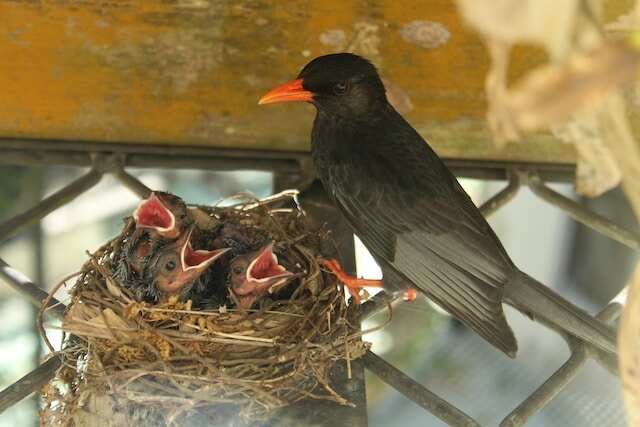
Essential Oils
Essential oils can serve as a natural repellent option for deterring avian activity on downspouts, potentially providing a safer and eco-friendly solution for those seeking to discourage birds from inhabiting their gutters.
Aromatherapy benefits have been widely acknowledged, and essential oils can be used not just for relaxation, but also for pest control.
Citronella, peppermint, eucalyptus, and lavender are some of the essential oils that can be used to repel birds.
Essential oil recipes can easily be found online and can be mixed with water or carrier oils for use on downspouts.
Diffuser blends can also be used to repel birds.
However, caution must be exercised to ensure that the concentration of the essential oils is safe for the environment and human health.
While natural, essential oils can still be toxic if used inappropriately.
Nonetheless, essential oils provide a viable option for those seeking to avoid using harsh chemicals.
The subsequent section about ‘homemade solutions’ will provide further eco-friendly and cost-effective methods for bird control.
Homemade Solutions
For those seeking cost-effective and environmentally-friendly methods for deterring avian infestations from gutters and downspouts, homemade solutions offer a practical alternative to chemical repellents and professional wildlife control services.
DIY remedies such as spraying a mixture of hot sauce and water on downspouts, or hanging old CDs and DVDs to create reflective surfaces that deter birds, are simple and effective solutions.
Homemade deterrents such as bird netting, which can be made using nylon mesh and zip ties, or installing a small fence around the downspout area using bamboo sticks, are also effective ways to keep birds away.
Natural solutions like using vinegar or lemon juice to clean gutters and downspouts can also repel birds.
However, it is important to note that homemade solutions may not be as effective as professional bird control services and may require regular maintenance.
It is also important to address bird infestations promptly to prevent further damage.
Best Practices
To prevent damage to gutters and downspouts and reduce health risks associated with bird infestations, implementing best practices for bird control is crucial.
Some of the best practices for bird control include prevention methods such as cost-effective solutions with long-term effectiveness.
These methods include installing bird deterrents, spikes or wire mesh, deterrent ribbons, physical barriers, and scare devices.
Regular maintenance of downspouts and gutters is also essential in preventing bird infestations.
Addressing bird infestations promptly and consulting with a professional wildlife control company can also aid in preventing future infestations.
By implementing these best practices, homeowners can effectively keep birds from nesting on downspouts and prevent damage and health risks associated with bird infestations.
Regular Maintenance
Importance of regular maintenance is crucial to prevent bird infestations in downspouts and gutters. Common maintenance issues include clogging, leaks, and damage caused by weather conditions.
Preventative maintenance techniques such as cleaning debris, checking for leaks, and repairing damages can prevent birds from nesting on downspouts.
Regular maintenance can also identify any early signs of bird infestations and address them promptly.
Neglecting regular maintenance can lead to severe damage and more challenging bird infestation problems.
Therefore, it is necessary to conduct regular maintenance to prevent bird infestations and ensure the longevity of downspouts and gutters.
In the table below, we have compiled some of the best practices for regular maintenance of downspouts and gutters.
| Best Practices for Regular Maintenance | Description | Benefits |
|---|---|---|
| Clean debris regularly | Remove leaves, twigs, and other debris | Prevents clogging and water damage |
| Check for leaks and damage | Inspect downspouts and gutters for leaks and damage | Prevents water damage and bird infestations |
| Repair damages promptly | Fix any damages found during maintenance | Prevents further damage and bird infestations |
| Install gutter guards | Install gutter guards to prevent debris buildup | Reduces the frequency of maintenance |
| Hire professionals | Hire professionals for regular maintenance and repair | Ensures proper maintenance and repair |
Regular maintenance is essential for preventing bird infestations and maintaining the longevity of downspouts and gutters.
Neglecting maintenance can lead to severe damage and more challenging bird infestation problems.
Therefore, it is necessary to conduct regular maintenance, including cleaning debris, inspecting for leaks and damages, and repairing damages promptly.
Installing gutter guards and hiring professionals can also help reduce the frequency of maintenance and ensure proper maintenance and repair.
In the next section, we will discuss the importance of addressing bird infestations promptly.
Prompt Infestation Addressing
Addressing bird infestations promptly is crucial to prevent further damage and potential health risks, while also ensuring the safety and comfort of both humans and birds.
Wildlife control and pest management methods can be employed to safely remove any nests or birds that have already taken up residence on downspouts.
It is important to consider the environmental impact of any removal methods and choose the most humane option.
Delaying action can lead to further damage to downspouts and gutters, and can also increase the risks of disease and infection from bird droppings.
By addressing bird infestations promptly, homeowners can ensure the longevity of their property and the safety of their family.
Professional Consultation
Consulting with a professional wildlife control company can provide effective and humane solutions for managing bird infestations on downspouts, while also minimizing potential environmental impacts.
Wildlife control experts possess the knowledge, skills, and equipment necessary to address bird infestations in a safe and efficient manner.
They can offer customized solutions based on the specific needs of the property, such as installing bird deterrents, using non-lethal bird repellents, or implementing physical barriers to prevent birds from accessing the downspouts.
Professional services also ensure that any bird nests are removed safely and legally, without causing harm to the birds or violating any wildlife protection laws.
By seeking expert advice and assistance, homeowners can effectively resolve bird infestations on their downspouts and prevent future nesting activity from occurring.
Frequently Asked Questions
What types of birds commonly nest on downspouts?
Sparrows, swallows, and robins are common birds that are known to nest on downspouts.
These birds have unique nesting habits and preferences, with sparrows often building their nests near human habitation, while swallows prefer nesting in open areas such as barns and garages.
Robins, on the other hand, prefer to build their nests on tree branches.
To prevent these birds from nesting on downspouts, various repellent options are available, including bird deterrents, spikes or wire mesh, deterrent ribbons, and scare devices.
DIY solutions such as trimming overhanging branches, adding physical barriers, and using natural remedies such as sticky repellents, essential oils, and homemade solutions can also be effective.
It is important to address bird infestations promptly, regularly maintain gutters and downspouts, and consult with a professional wildlife control company if necessary.
Are there any legal restrictions on deterring birds from nesting on downspouts?
Bird nesting laws dictate the ethical and humane bird control measures that can be employed to prevent birds from nesting on downspouts.
For instance, in the United States, it is illegal to harm or disturb migratory birds, their nests, or eggs without a permit from the U.S. Fish and Wildlife Service.
Therefore, any bird control measures that involve physically harming the birds or destroying their nests are illegal.
However, there are several humane and ethical bird deterrents that can be used to prevent birds from nesting on downspouts without causing harm.
These include installing bird deterrent ribbons, using spikes or wire mesh, trimming overhanging branches, and adding physical barriers.
It is important to consult with a professional wildlife control company to ensure that the chosen bird control measures comply with bird nesting laws and are effective in deterring birds from nesting on downspouts.
How often should downspouts and gutters be inspected for bird nests?
Inspection frequency is an important aspect of preventing bird nesting on downspouts. Nesting patterns vary depending on the species of bird, the climate, and the surrounding environment.
Some birds may nest multiple times a year, while others may only nest once. It is recommended to inspect downspouts and gutters at least twice a year, preferably in the spring and fall, when birds are more likely to construct nests.
Preventative measures such as installing bird deterrents, using spikes or wire mesh, trimming overhanging branches, and applying natural remedies can also help reduce the likelihood of bird nesting.
Regular maintenance and prompt addressing of bird infestations can also help keep downspouts and gutters free of nests.
Consulting with a professional wildlife control company may also be necessary for more severe cases.
Can bird nests on downspouts cause damage to a home’s foundation?
Bird nests on downspouts can cause damage to a home’s foundation. The weight of the nest, debris, and bird droppings can clog the downspout, preventing proper drainage and causing water to overflow.
This can result in soil erosion, water damage to the foundation, and mold growth.
To prevent such damage, homeowners can take steps to protect their downspouts, including installing bird deterrents such as spikes, wire mesh, deterrent ribbons, and scare devices.
If a nest is already present, it should be removed promptly to prevent further damage.
Regular maintenance of downspouts and gutters is also essential to ensure proper drainage and prevent bird infestations.
Consulting with a professional wildlife control company can provide more extensive downspout protection solutions.
Are there any environmentally-friendly bird deterrent options available?
Eco-friendly options for bird deterrents are becoming increasingly popular as more individuals look for ways to reduce their impact on the environment.
DIY solutions such as hanging reflective objects or using natural scents like peppermint oil can be effective in deterring birds from nesting on downspouts.
Understanding bird migration patterns can also aid in prevention efforts, as birds are more likely to nest in the spring and summer months.
While physical barriers such as spikes or wire mesh may be effective, they may not be the most environmentally friendly option.
By utilizing natural remedies and DIY solutions, homeowners can effectively deter birds from nesting on their downspouts while minimizing their impact on the environment.
Conclusion
In conclusion, preventing birds from nesting on downspouts is crucial for the protection of property and the safety of inhabitants. Bird nests can cause damage to downspouts and gutters, as well as pose health risks.
Fortunately, there are various solutions available to deter birds from nesting on downspouts, including bird deterrents, spikes, and wire mesh.
Implementing best practices such as regular maintenance and prompt infestation addressing can also help maintain a bird-free property.
It is important to remember that preventing birds from nesting on downspouts is not only about preserving the integrity of property, but also about protecting the natural habitats of birds.
By utilizing humane deterrent methods and considering alternatives such as nesting boxes, we can coexist with birds in a way that is beneficial for both humans and wildlife.
As the saying goes, ‘prevention is better than cure.’ By taking proactive measures, we can prevent bird infestations on downspouts and create a harmonious environment for both ourselves and our feathered friends.


